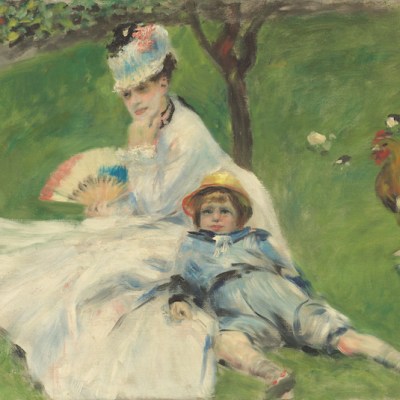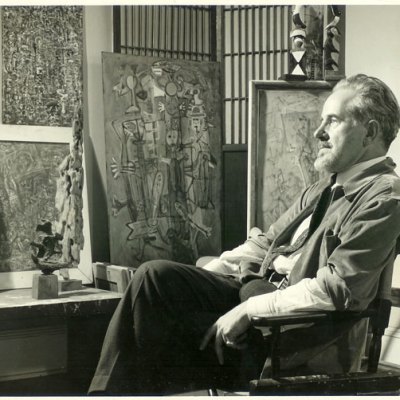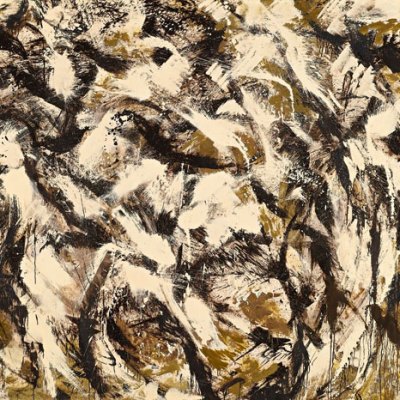The Musée de l’Orangerie’s summer exhibition considers Monet’s influence on the Abstract Expressionists. It is a clear, even obvious link. Ever since Alfred Barr, the founding director of the Museum of Modern Art, bought a Monet water lily panel in 1955 – despite his concerns that it would be too big for the museum – critics have stressed the formal and stylistic commonalities between Monet and the likes of Jackson Pollock, Willem de Kooning, and their compatriots. Barr was eager to position these American artists as the natural inheritors to French modernism, and it has been said that Monet represented ‘a bridge between the naturalism of early Impressionism and the highly developed school of Abstract Art’ in New York. This school was, for a time, labelled ‘abstract impressionism’. It is largely an accident that the term did not stick, and ‘expressionist’ supplanted ‘impressionist’.
The Japanese Bridge (1918–24), Claude Monet. Photo: Studio Sebert, Paris; courtesy Blondeau & Cie, Geneva
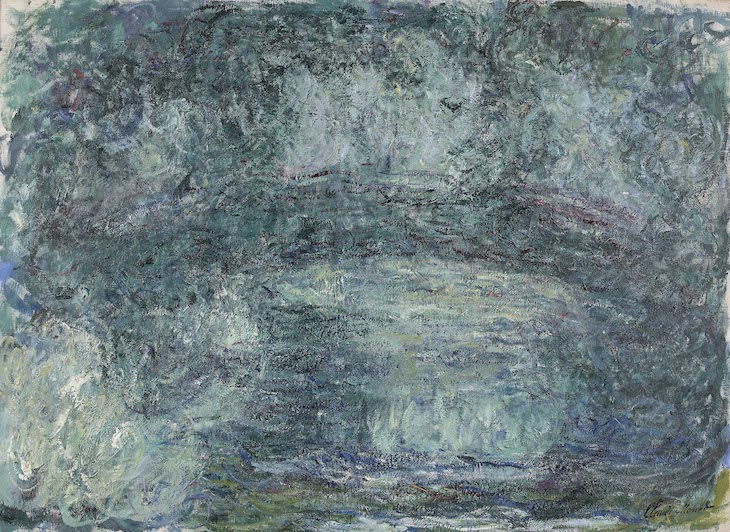
Painting (1954), Philip Guston. Photo: the Museum of Modern Art, New York/Scala, Florence; courtesy Hauser & Wirth; © The Estate of Philip Guston
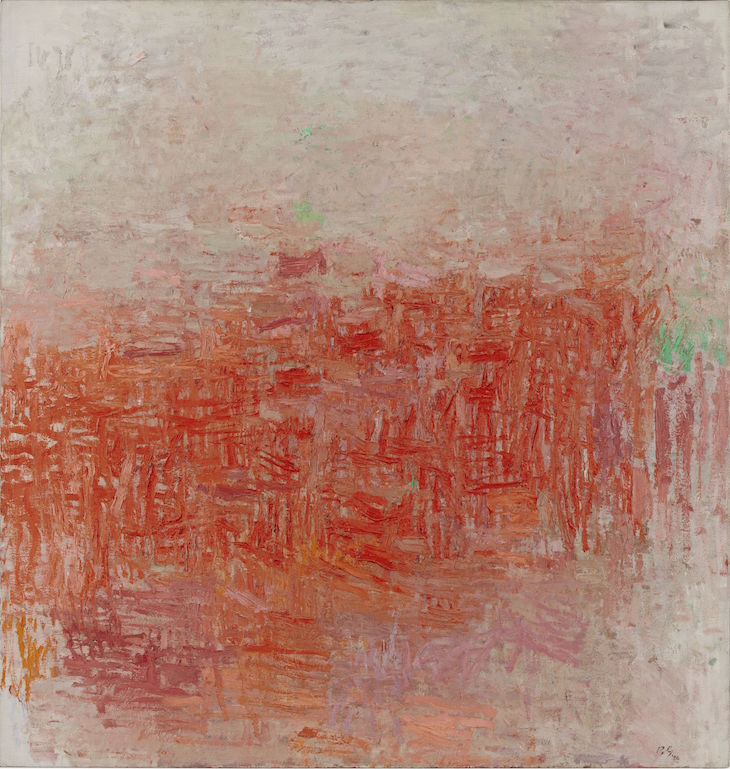
The exhibition’s curator and director of the Orangerie, Cécile Debray, has done an excellent job in juxtaposing the 10 works by Monet and the 20 by American titans like Mark Rothko, Barnett Newman and Clyfford Still so as to tease out their semblances. Debray has left the major paintings of Monet’s water lily cycle in the gallery upstairs – described as ‘the Sistine Chapel of Impressionism’ by André Masson – and decided instead to show more provisional late works by Monet: works that are more carefree and gestural. There are a number of wonderful scrawls and proto-action paintings, such as The Weeping Willow (1920–22), that with their energetic and curvilinear forms could be mid-career Pollocks at a squint.
The Weeping Willow (1920–22), Claude Monet. Photo: Michèle Bellot; © RMN-Grand Palais (Musée d’Orsay)
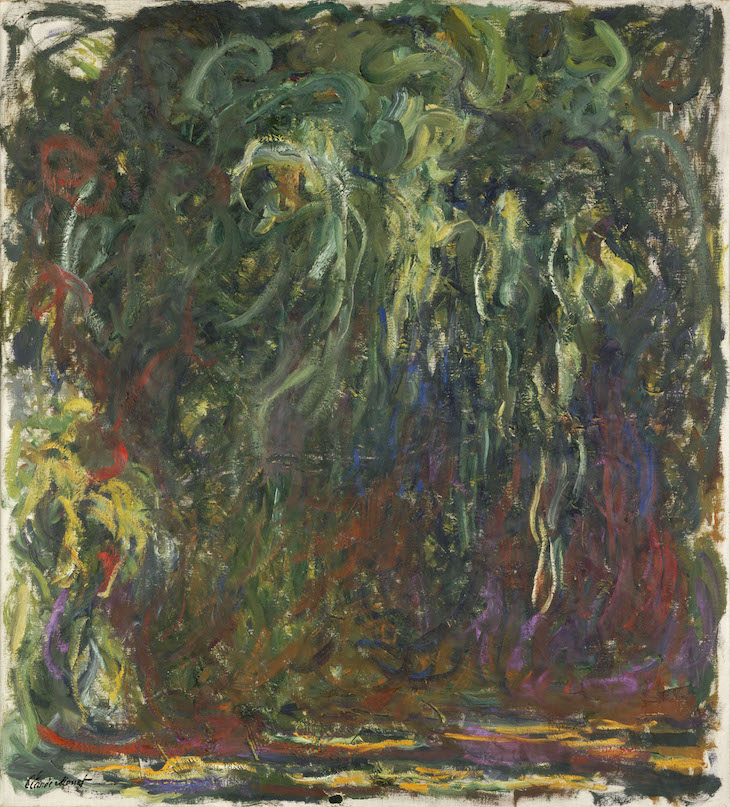
The affinities are many: the monumental aspect of the works (what Ellsworth Kelly, awed at Monet’s Giverny studio, called the ‘size of the walls’); the canvas as an arena for action; and ‘all-over’ composition. The pairing does feel a little like a fait accompli – especially when compared with more inventive connections, such as those explored by the exhibition ‘Turner Monet Twombly: Later Paintings’ that opened at the Moderna Museet in 2011–12. Still, it is hard not to be seduced by the works on show. Many of these paintings travel infrequently or have not been seen together before, and many of them are from less familiar stages of these very familiar artists’ careers. There are some important loans from the Centre Pompidou, not least The Deep (1953) – an enigmatic painting of an abyss, in Jackson Pollock’s post-signature style. There are also two exuberant paintings by Helen Frankenthaler from 1963 – Riverhead and Milkwood Arcade – that demonstrate her debt to the Monet who found pure joy in colour.
It is, however, the first painting that visitors see as they walk down the steps into the gallery space, even though it is not included in the exhibition proper, that appears to be the knockout work on show. A long-term loan from the Pompidou, The Good-Bye Door (1980) is a magnificent polyptych from late in the career of Joan Mitchell, arguably the painter with the greatest formal debt to late Monet. With its vibrant and frenetic brushstrokes, and its floral greens and ultramarines, the work calls to mind a garden – or even, perhaps, lily pads. (There are also earlier works included in the exhibition – Peinture [1956–57] and Untitled [1964] – that demonstrate why Mitchell has been gathering such a lot of critical and commercial attention of late.)
Green Painting (1952), Ellsworth Kelly. Courtesy Art Institute of Chicago; © Ellsworth Kelly Foundation
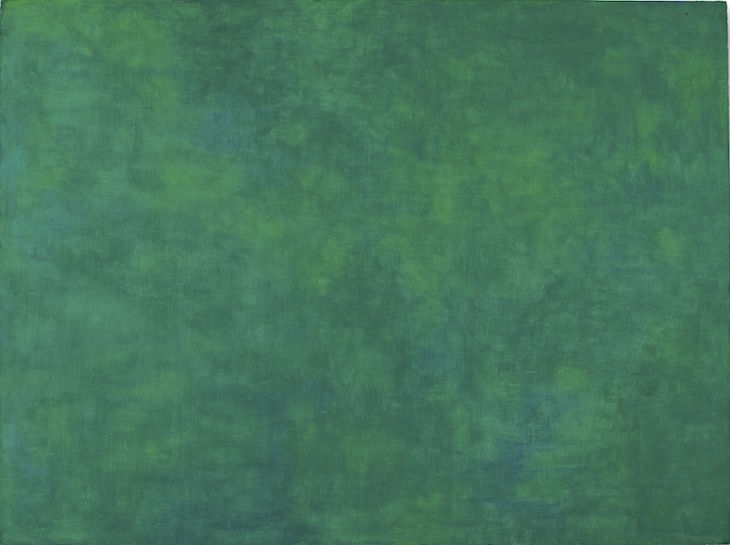
Blue Water Lilies (1916–19), Claude Monet. Photo: Patrice Schmidt; © Musée d’Orsay, Dist. RMN-Grand Palais

Despite the fact that Mitchell bought a house perched on top of a hill in Vétheuil, just down the road from the pond at Giverny, overlooking both the Seine and Avenue Claude Monet, she was quick to deny too close a relationship: ‘I bought this house because I liked the view, not out of any love for Monet.’ In this interview with Deborah Solomon from 1991, Mitchell even rhymed ‘Monet’, ironically, with ‘bonnet’. Of course, shows about influence can often overdetermine the relationship between artists. And there is something rather old-fashioned in organising a history of modern art that begins in France and then gravitates to New York. But that is not to say that the arrival of Monet’s water lilies in the United States, and their subsequent reappraisal by the American abstractionists, were anything short of a revelation. ‘In Monet we find a world of art,’ wrote Clement Greenberg, ‘with the variety and spaciousness and ease of a world.’
‘The Water Lilies. American Abstract Painting and the Last Monet’ is at the Musée de l’Orangerie until 2 September.

